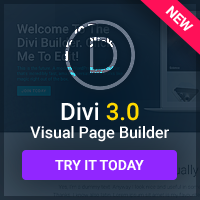Logos are difficult to design. Every website needs a logo, and you should spend some time designing them or yours if you haven't already
Your Logo is Your Face.
When visitors come across a website that they haven't seen before, one of the first places they look is at your logo and that's when they start to form impressions of you. A good logo can make or break trust in your site, and be a big factor in whether anyone takes you seriously. Branding experts know this: logos can produce positive reactions (like recognition), and negative ones (like revulsion), but both are equally strong. Having a bad logo is, effectively, like having an untrustworthy-looking face.
Keep Pictures Simple.
If you do include an image in your logo, keep it to one, and keep it to simple shapes. You don't want your logo to become ‘busy': just suggest what you're getting at, instead of pasting in a full-colour photograph of it. In fact, you should keep your logo to as few colours as possible, if you want it to make an impact.
Typography is Important.
Don't let anyone deceive you into thinking that the most important thing about a logo is how many little shapes and pictures it has in it. What draws visitors' eyes about logos is the typography: the font, spacing and whitespace.
Unfortunately for logo design, there are a hundred or so fonts that come with Windows and Office, and they've become overwhelmingly common in amateur logos. You're never going to be taken seriously if your logo appears in Times New Roman, or Verdana, because everyone else's is too.
So where can you find a less-common font. Well, take a look around sites like fonts.com and typography.com for a start. Personally, I often like to use fonts that I've seen in advertisements and found appealing: you can identify any fonts you can scan using a service like WhatTheFont (www.myfonts.com/whatthefont) it will take a look at the letters and tell you which font you've found.
Of course, commercial fonts can be expensive. Don't pay ridiculous amounts, but don't be afraid to pay a little: the chances are that you'll be getting a much better font than you would be otherwise.
You can find great fonts at places like t26, Chank or check Typophile's site for some free fonts.
Avoid Cliche's.
Finally, whatever you do, please avoid the painful cliche logos that are so common on the web. To help you out, here's a quick list of logo types to stay away from:
Decade-linked logos. Please don't make your logo look like something from the '60s, '70s or '80s, unless one of those decades is directly relevant to your site. If you just do it for no reason, it's a cliche.
Spirals. Putting spirals in logos has been done to death no matter what variations you might be able to think of on it, they've been done. Spirals are nice, appealing shapes, but simply too common in logo design to consider.
Animals. Putting an animal (or a silhouette on an animal) into your logo might look nice, but the chances are that there are already plenty of people out there using your animal. Especially if you've had the ‘original' idea of combining a rabbit and a hat to imply that your product is ‘magic'.
Letters making faces. Painful in every case, and yet getting more common all the time. Please resist the urge to draw a little curve under two O's to make a smiley face. Please.
Letters making punctuation. Like the faces, but worse. How many more I's turning into exclamation marks do we have to endure? Just don't do it.
Swooshes. The king of the clich's, the swoosh is at the point where using it in your logo will get you mocked. A swoosh is a curved line running across your logo some say it's now the most common logo device in the world. I'm sure you can think of something better.


